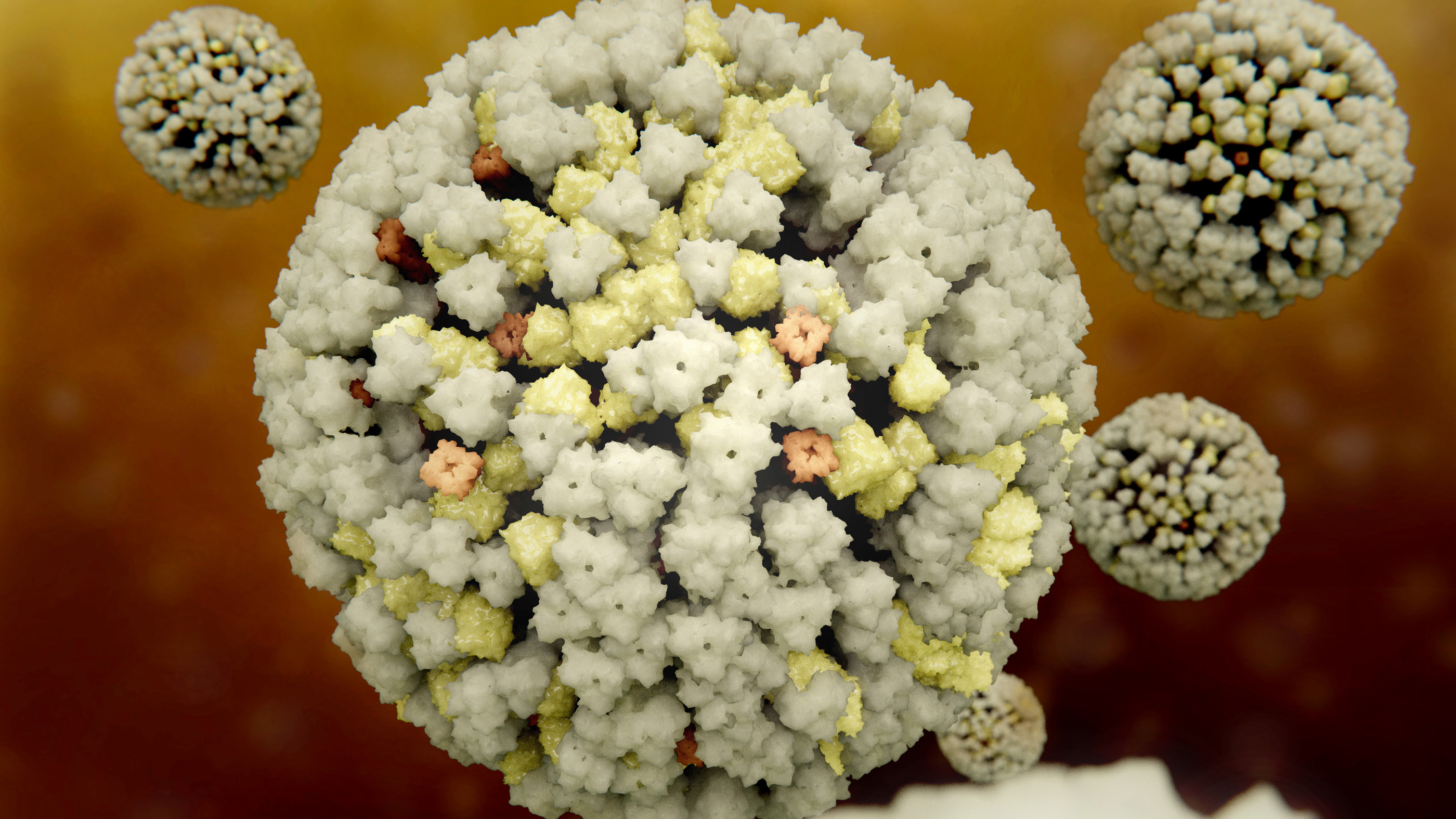China reports first known human case of H10N3 bird flu

A man in China caught the first case of H10N3 bird flu ever reported in a human, China's National Health Commission (NHC) announced Tuesday (June 1).
The H10N3 strain of avian influenza normally causes mild disease in birds, and until now, no cases of the viral infection had been reported in humans, according to a statement on the NHC website, as translated by Reuters. But on April 23, a 41-year-old man in the city of Zhenjiang developed a fever that progressed over the following days, and on April 28, he went to a local hospital for treatment.
(Although H10N3 only causes mild disease in its natural hosts, that may not hold true when the strain jumps to people.)
On May 28, the Chinese Center for Disease Control and Prevention (CCDC) performed a genetic analysis on specimens from the infected man and determined he was infected with H10N3, according to the statement. The CCDC then monitored the surrounding province of Jiangsu for additional cases of infection and specifically sought out the man's close contacts, but they discovered no additional cases. The man is now in stable condition and ready for discharge from the hospital, the statement notes.
Related: 11 (sometimes) deadly diseases that hopped across species
Scientists will need to thoroughly examine the genetic material of the strain that infected the man to see how it differs from H10N3 samples collected in the past, Filip Claes, regional laboratory coordinator of the UN's Emergency Centre for Transboundary Animal Diseases at the Regional Office for Asia and the Pacific, part of the agency's Food and Agriculture Organization, told Reuters.
In general, H10N3 doesn't crop up very often in its natural hosts, birds, Claes noted. From the late 1970s to 2018, scientists isolated about 160 samples of the viral strain from infected animals, mostly from wild birds and waterfowl, and the strain hadn't been detected in chickens, he said.
Get the world’s most fascinating discoveries delivered straight to your inbox.
The CCDC did not specify how or when the infected man may have picked up the virus from a bird, Reuters noted. But based on the CCDC's assessments so far, there's little risk of the virus spreading on a large scale, the agency said. When avian influenza viruses make the leap from birds to humans, they usually don't spread between humans, and when they do, their transmission is typically "limited, inefficient and not sustained," according to the U.S. Centers for Disease Control and Prevention.
However, in rare instances, avian flu can indeed spark major outbreaks among people, so monitoring for new cases of infection remains very important for public health, according to the CDC. For instance, the last bird flu to cause significant outbreaks among humans was H7N9, which killed more than 300 people in 2016 and 2017, Science magazine reported. That virus strain has a case-fatality rate of about 40%, according to a 2016 issue of the CDC journal Morbidity and Mortality Weekly Report.
And back in 1957, the avian influenza virus H2N2 swapped genes with human flu viruses and sparked a full-blown pandemic, Gizmodo reported. Evidence suggests that the flu strain that caused the 1918 pandemic, H1N1, also came from birds, refuting some older studies that suggested it originated from a mix of human and swine viruses, Nature reported in 2014.
Earlier this year, Russian authorities reported the first known cases of an avian influenza virus called H5N8 passing from poultry to humans, Live Science previously reported. Seven workers at a poultry plant caught this strain, but there was no evidence of human-to-human transmission, meaning the virus spread directly from birds to the workers and did not spread from the workers to other humans.
Originally published on Live Science.

Nicoletta Lanese is the health channel editor at Live Science and was previously a news editor and staff writer at the site. She holds a graduate certificate in science communication from UC Santa Cruz and degrees in neuroscience and dance from the University of Florida. Her work has appeared in The Scientist, Science News, the Mercury News, Mongabay and Stanford Medicine Magazine, among other outlets. Based in NYC, she also remains heavily involved in dance and performs in local choreographers' work.


